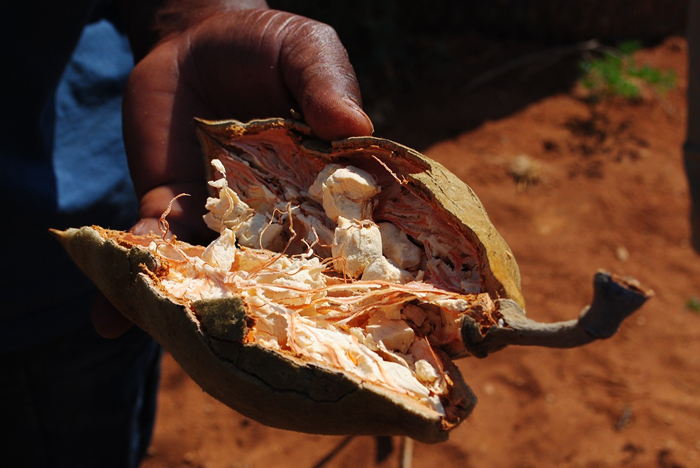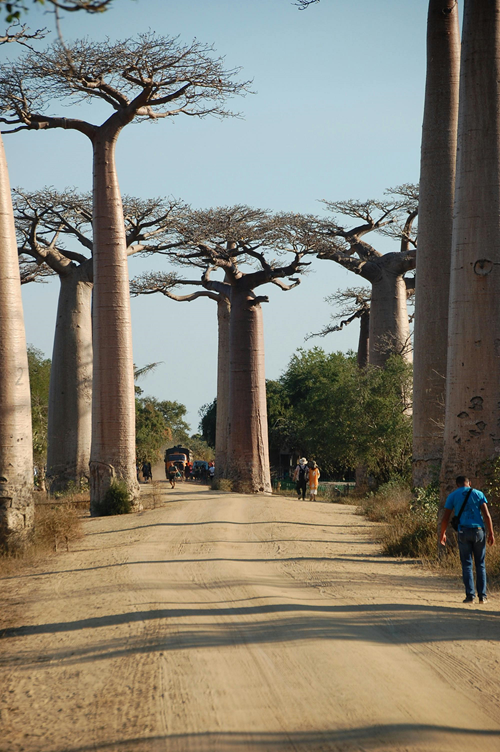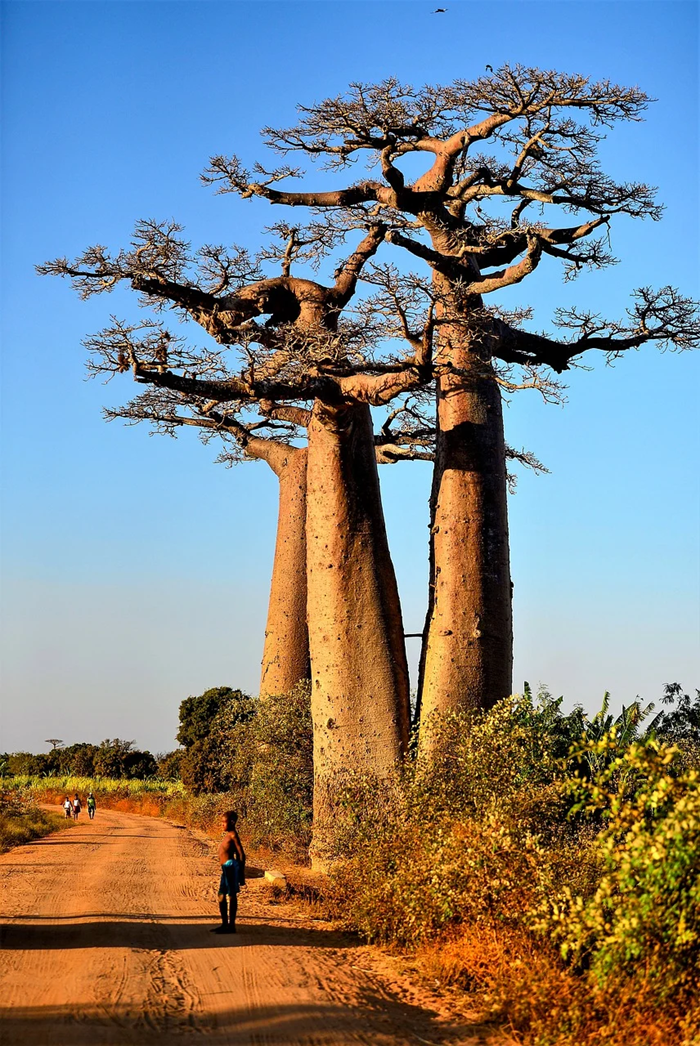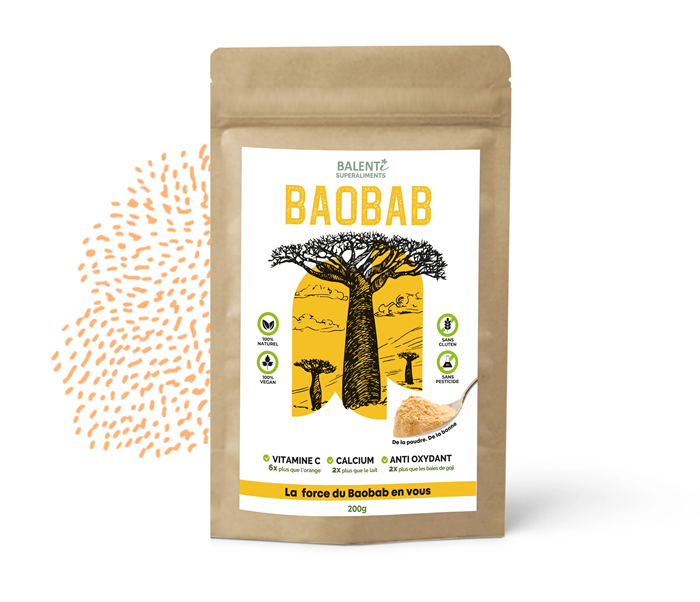Baobab :
The tree of life

Baobab trees are remarkable and symbolic trees of Africa. They are part of the botanical order Malvales, which also contains other families and genera with more discreet species such as the mallows that can be found on the side of our paths. Baobabs are part of the genus Adansonia. Some species of Baobab are endemic to Madagascar (6 species), or even one in Australia, while most other species are found throughout Africa such as Adansonia digitata L. It is a tree that generally grows sparsely.
With its characteristic appearance, it is usually very massive and can reach 25 m in height and more than 20 m in circumference. Its diameter reaches 5 to 7 m. It has a crown of irregular, leafless branches at the top of the trunk for most of the dry season. This is one of the explanations for its name “the upside-down tree”, because with its bare branches, it seems to have been turned upside down with its roots at the top. The lifespan of the Baobab can be up to 2000 years.
In Africa, its presence indicates a close, shallow source of water that has attracted human concentrations and the creation of villages.
All parts of the Baobab are used. The fruits, which are very nutritious, are sought after for their pulp. The seeds are also eaten fresh or roasted. The roots of young plants can be eaten like carrots. The leaves can be eaten in porridge or powder form after drying.
In addition, the fibre and bark are used to make utilitarian objects (baskets, bags, ropes). There are multiple uses for this tree, named “the source of life”. The other major use of baobab is medicinal. It is sometimes referred to as the “pharmacist tree”. The benefits attributed to it are multiple:


- Better transit thanks to high fibre content
- Toning properties thanks to its richness in vitamins A, C, B1, B2, B6 and PP, minerals (calcium, phosphorus, and to a lesser degree, iron, potassium, zinc), amino acids (L-proline and histidine in particular) and contains more than 11 essential amino acids.
- Antioxidant properties related to vitamin C and polyphenols including flavonoids. and indications to combat oxidative stress, osteoarthritis, promoted immunity….
- Cosmetic properties.
Despite its ancestral use in Africa and, more modestly, in Australia, the European Union has been slow to authorize it.
In Europe, dried Baobab pulp was only authorized for consumption in 2008 after a “Novel Food” procedure (New Food not consumed significantly before 1997 in Europe). Today, there are several references of Baobab powder on the market.
Science 2 Food had the pleasure of collaborating with the company Balenti, which promotes the benefits of the African baobab tree by marketing dried baobab powder and baobab spreads. You will be able to get an overview of the products via the link to the Balenti website on this page.






